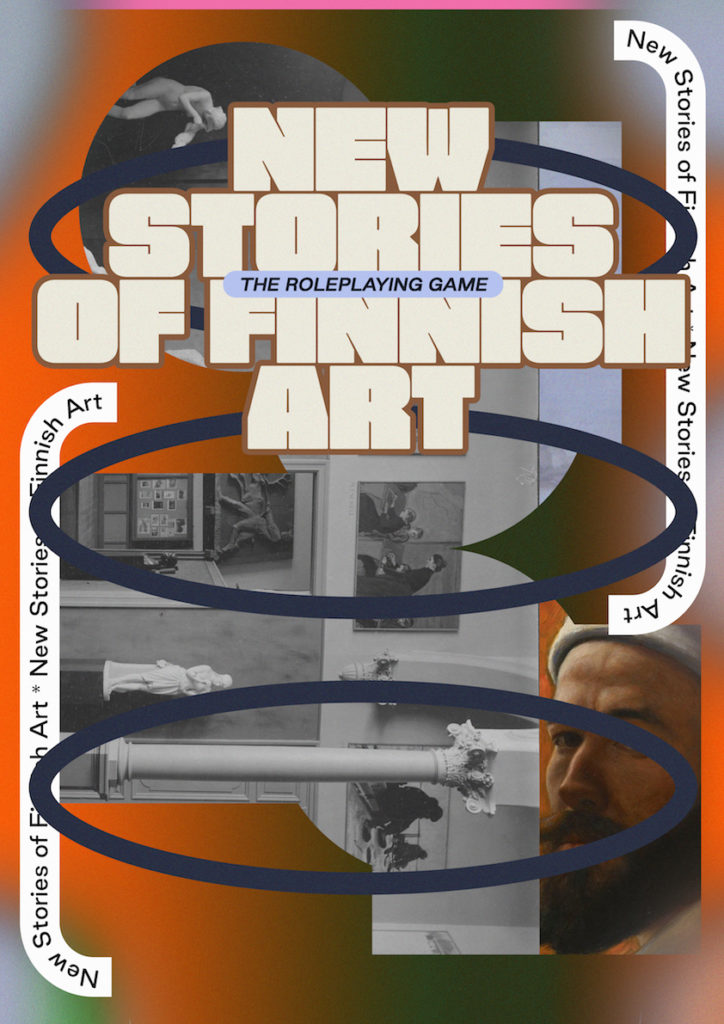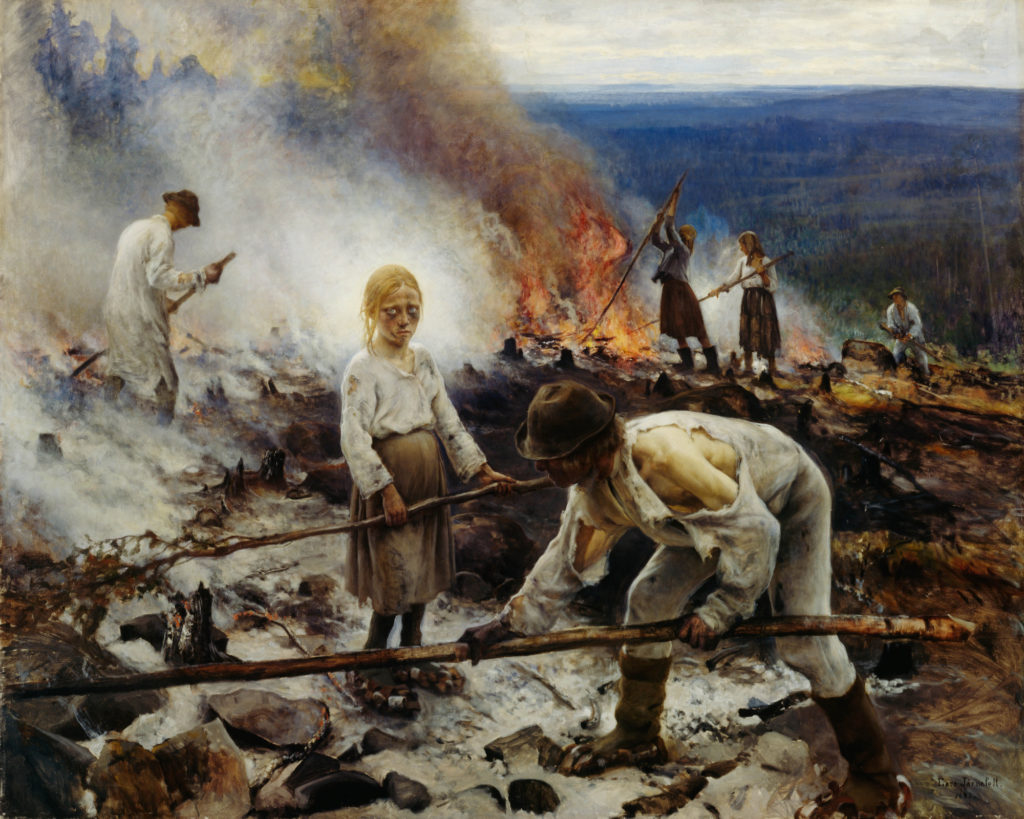I’m on a study project to improve my understanding of roleplaying games. To this end, I already have two reading projects, A Game Per Year and An Adventure Per Year. This is the third, with the goal of reading or playing 52 games made this year or last year. Originally I considered making this “A New RPG Per Week” and that’s where the number 52 comes from, even though a weekly schedule is probably not within my abilities.

New Stories of Finnish Art is a roleplaying game run as part of the 2019 UrbanApa art festival at the Ateneum art museum in Helsinki. It was designed and run by the Canadian artist Harold Hejazi.
Ateneum is the most iconic art museum in Finland, housing the foundational works of Finnish art from Akseli Gallen-Kallela onwards. New Stories of Finnish Art sought to recontextualize some of the most recognizable works of Finnish art history for modern audiences in a playful and fun manner.
This is a classic use of roleplaying and larp in a museum context, as the fictional frame of the game allows other artworks to find new meanings.
We played Finnish artists who embarked from Helsinki towards a creative retreat in the countryside. I played Eero Järnefelt. We were tasked with reshaping and reimagining our characters as we saw fit, changing gender and other markers as necessary. The characters also had superpowers.
As we prepared to leave Helsinki there was a fun mechanic where we were given a budget to spend on useful items and a price list for Stockmann. I spent my money on a kantele.
Once the trip got underway, we got into the real substance of New Stories of Finnish Art. Hejazi presented us with classic paintings reimagined as encounters, splaying them on a big screen and saying “this is what you see”.
The first of these was this one:

This was very interesting. On one hand, it’s basic roleplaying technique: “Here’s the situation. What do you do?”
On the other hand, this is one of the most cliche paintings in Finnish culture, the subject of countless reinterpretations, memes and commentaries. Encountering it has an unavoidable distancing effect since the visual is saddled with massive weight of cultural associations.
Yet a roleplaying game always comes with an invitation. We are asked to step into the painting, interact with it. Some of the characters in our group talked to the workers or made ill-advised efforts to help them.
I wasn’t one of these people. As Järnefelt, I stepped back and sketched…
As a method, building an encounter based on an image is an innovative one. The usual way to do it in a published adventure is through text but just showing a picture and saying: “This is what you see, what do you do?” has significant power.
The only example of this being done in a systematic way that comes to my mind is the 1978 D&D adventure Tomb of Horrors by Gary Gygax. It featured picture plates of the various scenes encountered by the characters in the titular tomb.
In the two hours we had for New Stories of Finnish Art, we went through a few of these famous paintings. The game had the effect this kind of roleplaying exercise always has: The paintings now have the additional context of the game in my mind. When I see them, I associate them with things that I have interacted with.